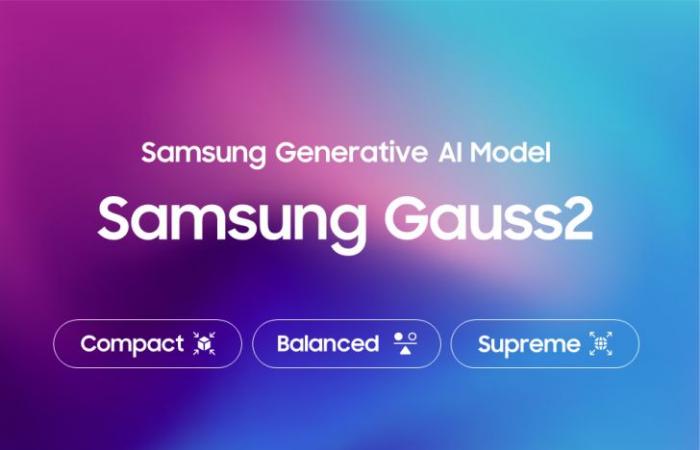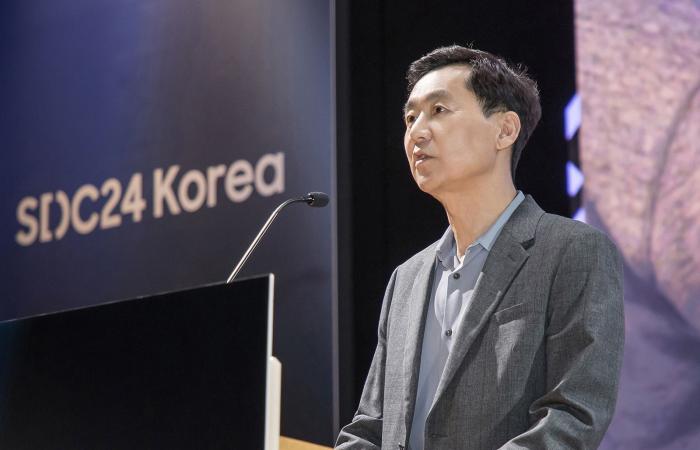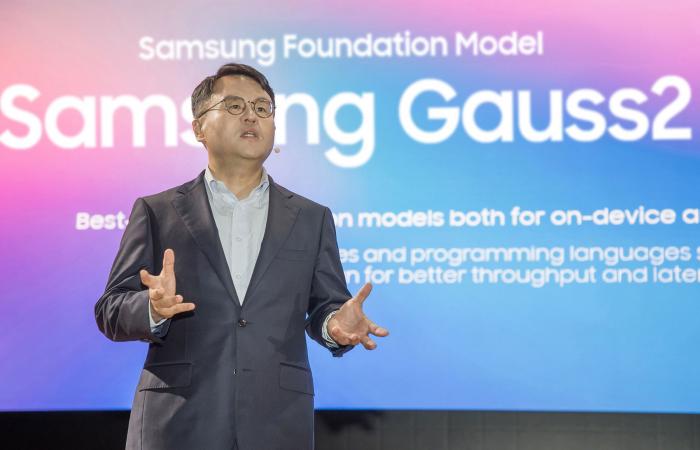Samsung’s virtual event highlights its latest software innovations and vision
Samsung presents Samsung Gauss2, the second generation of its generative AI model
Samsung Electronics Co., Ltd. today hosted the Samsung Korea 2024 Developer Conference (SDC24 Korea), a virtual event that showcased the latest software innovations and the company’s vision for the future.
Since 2014, Samsung Electronics has held this annual event to collaborate with software developers, making SDC24 Korea the 11e edition. This year’s conference highlighted research related to software embedded in products such as generative AI, software platforms, IoT, healthcare, communications and data. He also discussed the culture of open source development.
During the keynote speech, Samsung unveiled Samsung Gauss2, the second generation of its proprietary AI model, and highlighted its improved performance, efficiency and diverse application possibilities.
“With three distinct models, Samsung Gauss2 is already increasing our internal productivity, and we plan to integrate it into products to provide higher levels of convenience and customization,” said Paul Kyungwhoon Cheun, President, Chief Technology Officer of DX (Device eXperience) Division and Head of Samsung Research.
Samsung Gauss2: A multimodal linguistic model meeting diverse needs
Samsung Gauss2 follows the company’s in-house generative AI model unveiled last year, and it provides improved performance and efficiency to simultaneously process various types of data as a multi-modal model integrating language, code and pictures. It is offered in three distinct models to meet different needs: Compact, Balanced and Supreme.
The Compact model is a small model specifically designed to operate efficiently, even in limited computing environments. It provides optimized performance to be used on the device by maximizing the usage of the device’s computing resources. On the other hand, the Balanced model focuses on achieving a balance between output, speed and efficiency, providing consistent output across various tasks. Finally, the Supreme model, designed according to the Balanced model, takes advantage of mixing technology[1] of Experts (MoE), which enables significant reductions in computing costs during training and inference processes while maintaining high levels of performance and efficiency.
Samsung Gauss2 supports 9 to 14 languages as well as various programming languages, depending on the model. Samsung developed and incorporated its own stabilization techniques for training large language models (LLM) and designed a tokenizer[2] customized to ensure maximum efficiency for these supported languages.
Balanced and Supreme models deliver improved performance in key metrics such as response generation in various languages, including English and Korean, and coding capabilities
Customizable for various productivity and product development tasks
Having an internal generative AI model allows for easier customization so that optimal performance can be achieved for specific goals and applications. Samsung Gauss is already used in various tasks by Samsung employees, taking advantage of its customizable development capabilities.
Powered by the power of Samsung Gauss, the company’s in-house coding assistant “code.i” helps the company’s software developers. Now upgraded to Samsung Gauss2, it is used by DX (Device eXperience) division business units and overseas research institutes.
Since its launch last December, monthly usage of code.ia has quadrupled, with around 60% of all software developers at Samsung’s Korean DX division now using it. Additionally, the Samsung Gauss Portal is a conversational AI service powered by Samsung Gauss that helps DX Division employees manage various office tasks, such as document summarization, translation, and email composition. The service was extended to overseas subsidiaries in April. Additionally, starting in August, Samsung is using Samsung Gauss to help call center staff automatically categorize and summarize customer calls.

In the future, Samsung aims to continuously increase productivity within the company by applying Samsung Gauss2, to improve the performance of the code.i service, improve the natural language question and answer function of the Samsung portal Gauss and support multimodal functions like understanding tables and graphs, and creating images.
Additionally, as part of Samsung’s vision of “AI for All”, Samsung will continue to expand the scope of its AI-based services across all product lines so that users can have a more comprehensive experience. practical and more pleasant with Samsung products. And by integrating knowledge graph technology with AI, Samsung expects to provide even better personalization services.
Presentations on topics such as software platforms, IoT, healthcare, communications and data
Following the announcement of Samsung Gauss2, there were presentations on the user experience with Samsung’s platforms, which included relevant information on the SmartThings experience and enhancements to various software platforms.
Subsequently, 29 different technical sessions were conducted, including the following:
- The Future of Healthcare and Samsung Health’s Ecosystem Strategy
- Improving SmartThings Customer VOC Experience with Generative AI
- i: Understanding Samsung Electronics AI Coding Assistant
- Center for TV lifestyle content to enrich your daily experience
- AI solution for Samsung home appliances using AI Vision technology and the use of data
For more detailed information about SDC24 Korea, visit the official website (https://www.sdc-korea.com/).








